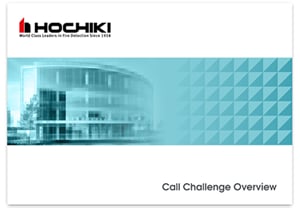"Call Challenge"
A new approach for many Fire & Rescue Services in regards to their response to Automatic Fire Alarm Signals
from commercial premises.

The Background to the Change in Approach
Fire and Rescue Service teams across the UK are responsible for providing immediate assistance and support to those in need. One of the primary roles of these services is to respond to fire-related incidents and emergencies. However, over the years, many fire and rescue services have faced a growing challenge – dealing with an ever-increasing number of false alarms from Fire Alarm Systems.
Automatic Fire Alarm Systems (AFAS) provide an early warning of fire and are one of the most effective ways to keep your business, staff and customers safe in the event of a fire. But unfortunately, a significant number of signals from these systems are not actual fires – they are false alarms often caused by cooking fumes or dust incorrectly reported by smoke sensors as smoke, or a lack of regular maintenance and testing of the fire alarm system.
These unwanted fire alarm signals (UFAS) mean fire crews are called out unnecessarily.
In Scotland alone, the Scottish Fire & Rescue Service (SFRS) crews are called to an average of 28,000 false alarms each year and investigating each incident can involve several firefighters and up to two fire appliances as part of the response.
To put this into context, this equates to 252,000 firefighters needlessly being called to unwanted fire alarm signals each year, when their time could be better spent tackling real fires, training or carrying out community safety work.
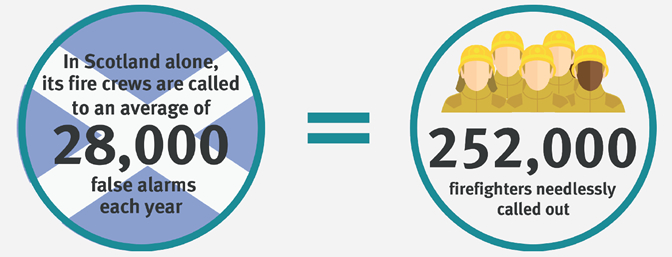
The "Call Challenge" Approach in Scotland
In an attempt to reduce the number of false alarms attended to by the SFRS, not all reports of fire will be automatically attended to by an appliance and its crew. Instead, the "Call Challenge" approach will be invoked.
The call challenge is a process that involves asking the duty-holder with responsibility for the workplace premises whether they have investigated a fire alarm before reporting a fire.
The aim is to ensure that the incident is a genuine emergency and requires an immediate response from the SFRS. By doing so, it is hoped that the SFRS can reduce the number of false alarms they respond to and focus their resources on real incidents that require urgent attention.
Fires Reported via 999 Calls
The call challenge is carried out by trained SFRS call handlers. When a 999 call is received, the call handler will ask for confirmation of an actual fire, or signs of fire, before sending the nearest resource. This will involve the duty-holder on site to safely investigate for signs of fire.
Signs of fire include: visual confirmation of flames/smoke or the smell/sound of burning.
This does not apply to those premises where there is a “sleeping risk” such as hospitals, care homes, hotels or domestic dwellings. These premises are exempt and can therefore expect the current level of emergency response..
Fires Reported by an Automatic Fire Alarm via ARCs (Alarm Receiving Centres)
The SFRS will treat any fire alarm signal as a sign of fire, other than from a single smoke detector.
Depending on the sophistication of the fire alarm system at the premises, it may be possible for an ARC to identify the device that has activated and advise the SFRS accordingly. Alarm signals from heat sensors, multi-sensors (heat and smoke) or sprinkler systems will not require investigating and an appliance will be mobilised immediately.
However, if an alarm signal received by the ARC cannot identify the type of device and the signal is received out of hours whilst the premises is empty, the SFRS will not automatically attend until an investigation has been carried out, even if this means a keyholder having to attend site to confirm the presence of a fire.
After rigorous public and private sector consultation, The SFRS adopted the “Call Challenge” approach when responding to 999 calls or AFAS signals from the 1st of July 2023.
Further information is available on the SFRS web site here.
The "Call Challenge" Approach in Northern Ireland
The Northern Ireland Fire & Rescue Service will be following suite in February 2024 with their own take on the Call Challenge approach.
They too will be asking duty holders on site to visually confirm the presence of fire before sending an appliance and its crew if the premises is occupied, and this is the main difference between their approach and Scotland’s. By “occupied”, this would include a single security guard on site, out of hours, for example.
Similarly, signals received via an ARC (Alarm Receiving Company) will also be vetted, they will be required to attempt to make contact with the duty holder at the premises from where the AFAS has originated from to ask them to verify the presence of fire. If there is no answer, and therefore a real fire cannot be confirmed, an appliance will be sent anyway.
Between 2017 and 2022
98.7%
of AFAS in Northern Ireland were false alarms
The NIFRS Regional Control Centre will dispatch the nearest resource if evidence of a fire is found or reported, but as stated on its web site the service is not legally obliged to respond to fire alarm signals if there is no fire or signs of a fire.
Again, this does not apply to those premises where there is a “sleeping risk” such as hospitals, care homes, hotels or domestic dwellings.
After their own public and private sector consultation, The NIFRS will adopt their “Call Challenge” approach when responding to 999 calls or AFAS signals from the 1st of February 2024.
Further information is available on the NIFRS web site here.
The "Call Challenge" Approach in London
The Scottish and Northern Ireland Fire & Rescue Services are not alone in adopting this approach to the reduction of false alarms.
In September 2023, The London Fire Brigade announced that they intend to introduce a very similar approach to avoid call outs to false alarms.
They themselves attended 47,000 false alarms last year and have recently completed consultation with the public and private sectors on a new approach.
47,000
false alarms attended in 2022 in London
Theirs is again slightly different from Scotland’s and Northern Ireland’s approach. They intend to stop automatically attending AFAS from commercial properties between the hours of 7am and 6pm, when the buildings would normally be occupied. They do however intend to always respond to 999 calls or AFAS generated out of these hours.
Again, this does not apply to those premises where there is a “sleeping risk” such as hospitals, care homes, hotels or domestic dwellings.
Further information is available on the LFB web site here.
Some Other UK Fire & Rescue Services Who Have Adopted This New Approach
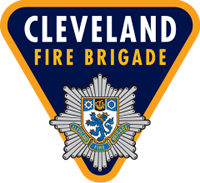
Cleveland Fire Brigade (2021)
(learn more)
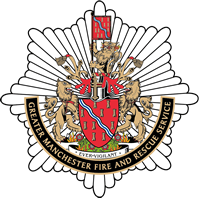
Greater Manchester F&RS (2020)
(learn more)
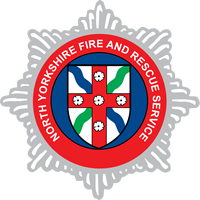
North Yorkshire F&RS (2023)
(learn more)
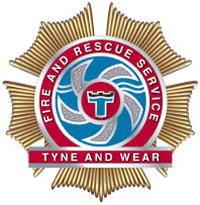
Tyne & Wear F&RS (2015)
(learn more)
What Should Building Owners Affected by the "Call Challenge" Approach Do Next?

Fire Alarm System Maintenance
As a building owner you must ensure that your premises are safe for staff, visitors and occupants in the event of a fire. You (or your designated "responsible person") have a responsibility under the Regulatory Reform (Fire Safety) Order 2005 and the Fire (Scotland) Act 2005 among others, to maintain the facilities and equipment provided and failure to do this could lead to prosecution.
ACTION: Check with your fire alarm servicing supplier that they are up-to-date with their maintenance visits to your property.

Need to speak to an expert? Let us know in the enquiry from below and we'll put you in touch with an approved maintenance company, based on your location

Staff Training
Your staff and other occupants should be made aware of how to respond safely to AFAS activations in each premises.
ACTION: It is recommended that you read the guidance “How to Investigate Your Fire Alarm” prepared by the Fire Industry Association. Ignoring this advice or assuming the fire and rescue service has been notified in the event of a fire alarm activation could put people and property at risk.

Need training? Hochiki can deliver a range of CPD-Accredited training seminars, either online or in-person. Let us know in the enquiry form below.
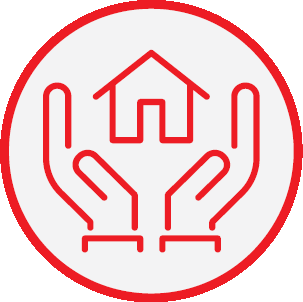
Building Insurance
Your building insurance might be affected by these new approaches, depending on which type of fire alarm system and devices you have installed.
ACTION: You should contact your insurance company to discuss how changes to the way your local Fire & Rescue Service responds to AFAS activations could affect your cover and to ensure you are adequately insured and protected.
Please note that all FRS will always attend a confirmed fire.
Taking Steps to Reduce False Alarms
The Fire Industry Association has plenty of information on its web site on how business owners can help to reduce false alarms, which can cause complacency, reduce the effectiveness of fire safety procedures in the event of a real fire, and disrupt your business – creating unwanted downtime and loss of money.
In summary, the general guidance for reducing false alarms is:
| Review your Fire Safety Risk Assessment and keep a log of all false alarms to identify any trends which should be raised with your fire alarm engineers. | |
| Create an action plan to reduce the chance of any false alarm occurring. | |
| Check sensor or detector types and their locations – would moving detectors or changing the type used reduce activations? Seek advice from your fire alarm engineer. | |
| Upgrade your AFAS with more modern technology, for example, multi-sensors that can sense both heat and smoke, to replace smoke-only detectors (see below for further information on Hochiki multi-sensors). | |
| Fit manual call points with protective plastic covers in known problem, vulnerable or high traffic areas. | |
| Ascertain whether any false alarms are a result of activating the wrong type of call points such as green emergency door release points, for example. | |
| Keep your AFAS appropriately maintained. | |
| Consider whether a link to an Alarm Receiving Centre is necessary or if it is appropriate to suspend the automatic dialling function whilst your buildings are occupied or at certain times of the day. | |
| Seek further guidance and advice from your alarm system provider or servicing agent, as well as your local legislative fire safety officer. |
The Building Research Establishment (BRE) and The Fire Industry Association (FIA) through their combined research proved that advanced multi-sensors which detect multiple criteria can outperform more basic models particularly in reducing false alarms.
In general, it was found that the more sophisticated the optical heat multi-sensors
were, the less prone they were to common causes of false alarms, whilst their ability to detect real fires was not compromised. This research will most likely further the development of product standards and codes of practice for smoke and multi-sensor detectors.
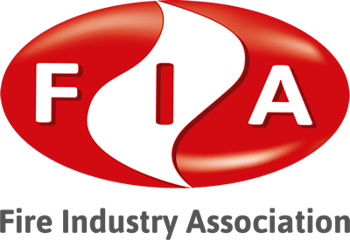
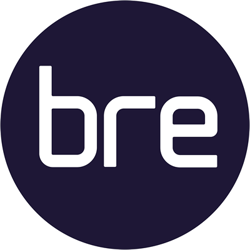
What is a Multi-Sensor?
The British Standard for fire system design, BS 5839 Part 1, defines a multi-sensor as:

a fire sensor that monitors more than one physical and/or chemical phenomenon associated with fire

So typically, these are sensors that detect smoke and heat, and sometimes CO, where these are monitored simultaneously. The all-round protection offered by multi-sensors makes them a popular choice for specifiers and installers for a number of reasons:
- They tend to be more effective than traditional single phenomenon sensors, because they are considering more than one external factor when making the fire decision
- They can also help reduce false alarms because generally they are much more accurate when determining the difference between a transient signal and a real fire situation
Traditional multi-sensors are most commonly used to detect heat, smoke, and sometimes CO, the main elements of a fire.
Heat
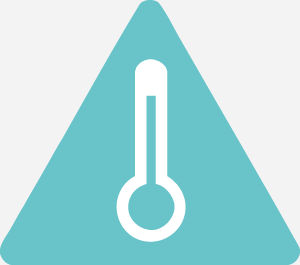
Generally detected by thermistors – components that physically react to heat, either over a set time (rate of rise sometimes referred to as RoR) or at a prescribed temperature level (referred to as Fixed Temperature).
Some models of heat sensor can be programmed to react to either heat phenomenon, depending on the environment or the assessed risk.
Smoke

Traditionally monitored via a smoke chamber which uses an infrared light source or sources in conjunction with light receptors to detect smoke particles in the air within the chamber.
The amount of emitted light reflected back is continually monitored – the idea being that if anything enters the air within the smoke chamber, the amount of reflection would change, which would then suggest the presence of smoke particles.
CO
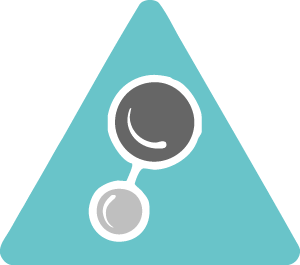
Carbon Monoxide (CO) is monitored by a special sensing element within the multi-sensor as this gas is often released very early during a smouldering fire. In other words, one that isn’t necessarily producing enough visible smoke or heat, found particularly in furniture fires.
So CO is generally a good indicator of a real fire, when other phenomena such as smoke are detected at the same time.
World Class Multi-Sensors from Hochiki



Multi-Sensor
An Intelligent loop-powered Multi-Sensor incorporating a thermal element and a High Performance photoelectric smoke chamber.
Has three modes controlled from the Control Panel, allowing either the optical or thermal element or both to be active in making the fire decision.
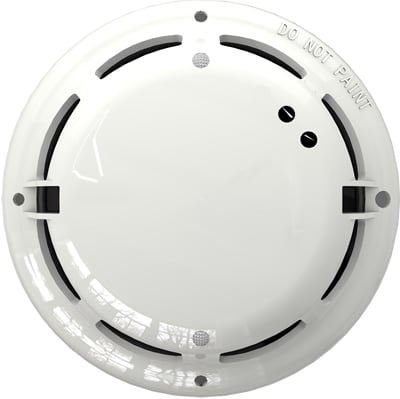
- User selectable modes of operation
- Incorporates Optical (Smoke) & Heat elements
- Removable, High Performance Smoke Chamber
- Twin LEDs allow 360 viewing – green when polling, turn red in fire
- Variable sensitivity
- Electronically addressed
- LPCB approved to EN54 Parts 5, 7 & 29
- Available in white, ivory and black




Multi-Sensor with CO
An intelligent loop-powered Multi-Sensor, with smoke, heat and CO sensing elements which can operate individually or in various combinations to make a fire decision. The unit offers 24 EN-approved modes of operation and incorporates a smart algorithm which allows the sensor to learn from its environment and reduce false alarms.
The CO sensing element can be used to detect smoke as well as life-threatening CO levels in certain modes.
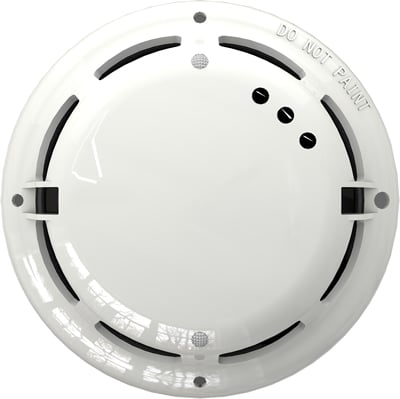
- 24 EN-Approved Modes of operation
- Incorporates Optical, Heat & CO elements
- Removable, High Performance Smoke Chamber
- Twin LEDs allow 360 viewing – green when polling, turn red in fire
- Variable sensitivity
- SMART algorithm to reduce false alarms
- Electronically Addressed
- LPCB approved to EN54 Parts 5, 7, 29, 30 & 31
- Available in white or ivory
True Multi-Sensor Certification
Reading the Small-Print
When it comes to multi-sensors, the testing and approval process isn’t as clear cut
as with more traditional sensors. As more and more advanced detection methods have come into play, the testing methods and resulting certification has also advanced.
Multi-sensors that claim to utilise multiple types of sensing elements to determine
a fire condition should be tested to multiple European standards, if they claim to be a true multi-sensor.
It's no longer technically correct to claim to be a true multi-sensor if a product is only tested to Part 5 (heat) and Part 7 (smoke) of the EN 54 standard.
EN 54-29
"Multi-sensor fire detectors - Point detectors using a combination of smoke and heat sensors".
EN 54-30
"Multi-sensor fire detectors - Point detectors using a combination of carbon monoxide and heat sensors".
EN 54-31
"Multi-sensor fire detectors - Point detectors using a combination of smoke, carbon monoxide and optionally heat sensors".
Unfortunately, what is seen most often are sensors claiming to be multi-sensors
but approved only to EN 54 Part 5 or Part 7, not to some of the newer multiple criteria standards such as Parts 29, 30 and 31.
From our standpoint here at Hochiki, we believe true multi-sensors should be able
to demonstrate this intelligent, multiple criteria monitoring capability by being
designed with these new published standards in mind from the outset.
So our advice at this point is to check the manufacturer’s LPCB certificates – freely available on the LPCB’s own reference site “Red Book Live” to check a multi-sensor’s technical credentials.

Not a "True" Multi-Sensor, smoke and heat elements have been tested independently (Part 5 and Part 7)

Hochiki's ACC Multi-Sensor Approval Certificate - smoke and heat elements tested working together

Hochiki's ACD Multi-Sensor with CO Approval Certificate - smoke, heat and CO elements tested working together
Conclusion
In conclusion, the "Call Challenge" for 999 calls is a valuable tool that Fire and Rescue Services can use to reduce the waste of resources responding to false alarms. By ensuring that only genuine emergencies receive an immediate response, these services can improve the efficiency of their operations and provide a better service to the public.
As such, it is likely that we will see more fire and rescue services across the UK introducing “Call Challenge” in the coming years.
FAQs
Q:
If I'm asked to verify a fire on site, what "signs of fire" will the Fire & Rescue Service accept from me, to then have them attend?
A:
You should be able to confirm the sight or smell of smoke, and/or the sight or sound of flames or burning. Once you verbally confirm this with the FRS, a fire appliance and crew will be sent to site.
Q:
What happens if my building is normally closed at night with no key-holder on site? Will the fire service still invoke Call Challenge?
A:
This scenario is handled differently, depending on the local FRS's individual "Call Challenge" approach.
In Scotland for example, If the fire alarm signal has been generated by a single smoke sensor, then yes, you will need to attend site and visually confirm the presence of fire before an appliance is sent. Two smoke sensors activated will automatically bring the fire service to site - but be aware of how long it can take for two separate devices to activate, particularly if they are situated in separate rooms.
Be aware also of the approach of "double-knock" or "confirmed output". This is where a fire control panel has been programmed to only go into fire if the smoke element of a Part 5 and Part 7 tested multi-sensor activates first, followed by its heat sensing element. In the time taken for the heat element to activate the fire could take hold.
The NIFRS will always attend if they know the building is unoccupied. Similarly the LFB will attend after normal working hours, assuming the building is unoccupied.
Q:
Why are Hochiki recommending replacing smoke sensors with multi-sensors to mitigate Call Challenge?
A:
The Call Challenge approach is all about reducing false alarms and ensuring the fire service is only sent to sites where there is a real fire situation. We believe that installing true multi-sensors (those that can operate two sensing elements at once in combination to determine a fire condition) is the best way to reduce false alarms.
Talk to us
Hochiki has over 100 years of life safety experience, if you need any further advice on "Call Challenge" or any other aspect of fire detection or emergency lighting, please use the enquiry form below and we'll do our best to help you.

